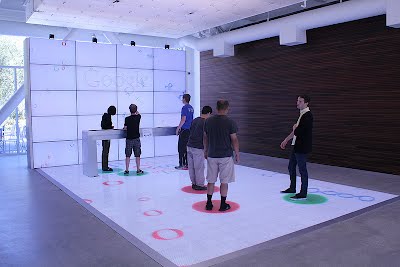Why we aren’t seeing more interactive music videos?
Music videos have always facilitated experimental art because there is an existing script, soundtrack, and tone to work with. The music provides an existing creative framework which heavily narrows the focus to production.
What’s not successful about the music video platform in interactivity?
I explored these five unique pieces (that each explore a different method of music video interactivity) to find some answers:
1.Ellie Goulding “Lights”
-User-navigated environment, emphasis on visuals
2. Arcade Fire “The Wilderness Downtown”
-User-stimulated environments, emphasis on bridging gap between “Arcade Fire” and audience
3. Cold War Kids “I’ve seen enough”
-User-controlled instrumentation, mild usage of interesting interactive visuals
4. Chairlift “Met Before”
-User-controlled narrative, emphasis on story, no interactive audio/visuals
5. Red Hot Chili Peppers “Look Around”
-User-controlled narrative, engaging content, many options to choose from
While most of these music videos had limited use of interactivity in some way, RHCP’s “Look Around” really engages with the viewer by making there ample options of things to play around. Allowing the user to scroll between four videos, each starring one member of RHCP doing something silly, gives enough footage that we don’t lose interest. Hidden in each video are highlighted items you can click to see personal footage of band members just being, well, human.
With the five music videos above, the interactive waters have been tested and my diagnosis is that we need to make these videos more interesting, via more content, more interaction, or more narrative. My favorite pieces were Chairlift’s “Met Before” and RHCP’s “Look Around” because the narrative pulled me in–and after all, isn’t that what makes a music video successful? Great music is what gets you a video, but it’s not what makes a video great.
Video has always been about telling a story, and you can’t engage with your audience without one. Cold War Kids “I’ve seen enough” impressed me with its creativity, but gave me no reason to stick around for the whole song after I’d worn out the interactive capabilities. Ellie Goulding’s “Lights” was awesome for about 30 seconds, but then I lost interest after I realized I’d be seeing nothing new if I kept playing.
Maybe as this technology becomes less fresh, we’ll start seeing some real blockbuster interactive music videos. Until then, I’ll just enjoy this one:





